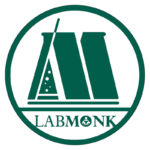[ps2id id=’background’ target=”/]
BACKGROUND
Bacteriophages are obligate intercellular parasites. They utilize the biosynthetic machinery of the host for their multiplication. They make an entry into the bacterial cell by first making a landing on the bacterial cell wall and then they will inject their DNA into the cytoplasm. Then this phase DNA acts as a template for the formation of phage proteins. Then these proteins cause the replication of the phage thereby subjugating the cell and leading to host cell lysis. A bacteriophage is very difficult to see and can be seen by using electron microscope. But by a method that is very much similar to colony counting method for counting the number of bacteria can be used for counting the number of phage particles. This is called plague assay. This method is a virological assay for counting the level of infectivity of the bacteriophage. The main principle of the plague assay is measurement of the single infectious virus capability to form a plague. Plague is developed at first as a infection of one cell by one virus which is then followed by replication and finally destruction of the cell. The newly replicated particles of virus will cause infection and destroy the surrounding cells.
[ps2id id=’requirements’ target=”/]
REQUIREMENTS
Culture: 24 hours broth culture of E. coli
T2 coli phage
Media: Tryptone agar plates-Take 1 L of distilled water and add 10 g Tryptone
0.01-0.03 M Calcium chloride (reagent)
5 g Sodium chloride and 11g agar. Heat with regular agitation and boil for 1 minute to totally melt the powder. Autoclave at 121°C for 15 minutes
Tryptone soft agar tubes (2 ml/tube)-Same as Tryptone agar plates preparation without adding agar powder
Tryptone broth tubes (9 ml/tube) – In 1 L of water add 10 g Tryptone, 5ml Potassium chloride and 9 g Agar. Heat with regular agitation and boil for 1 minute to totally melt the powder. Autoclave at 121°C for 15 minutes.
Apparatus: Bunsen burner
Water bath
Thermometer
1 ml sterile pipettes
Sterile Pasteur pipettes
Mechanical pipetting devices
Test tube rack
Glassware marking pencil
[ps2id id=’procedure’ target=”/]
PROCEDURE
Viruses can multiply to incredibly high concentrations therefore it is required to dilute them for effective calculation. Do dilution of the bacteriophage and label them as follows:
a) Five tryptone soft agar tubes: 10-5, 10-6, 10-7, 10-8, 10-9
b) Five tryptone hard agar plates: 10-5, 10-6, 10-7, 10-8, 10-9
c) Ten tryptone broth tubes: 10-1 through 10-10
Preparation of plates
At first take five different tubes of tryptone soft agar and five different petri plates that is labelled 10 -5 to 10-9. Now keep this five soft tryptone agar tubes in the water bath and the water in the water bath should be just above the agar in the tubes. Raise the temperature of the water bath to 100oC to melt the agar. Now allow the agar to cool down and maintain the temperature at 45oC. This assures that agar doesn’t solidify before pouring into the petri plates. Now mix aseptically about two drops of the E. coli with the help of Pasteur pipette in the agar and gently mix it. Inoculating these bacteria will help in estimation of number of virus particles present in the particular solution and it is estimated from the number of bacteria killed. Add 0.1 ml of each serial dilution to corresponding soft agar tube that are still in hot condition in the hot water bath. Now by using different Pasteur pipettes and pipette tips perform the previous step for tryptone broth phage dilution tubes 10-6 to 10-9. Mix each tube properly and then pour it in petri plate with the respective label. This will result in formation of a thin layer of agar in each plate. Incubate each plate in the incubator for 24 hours at 37oC.1-3
Calculate the viral titer by examining the incubated plates. There will be cloudy area throughout the plates except in the regions where plagues have been formed as clear spot. Take the plate that has about 30-300 plagues and count the exact number of plagues. Then by using the formula determine the titer of your viral stock.
![]()
Where, d = dilution,
v = volume of diluted virus added to the plate
[ps2id id=’conclusion’ target=”/]
CONCLUSION
By using the above method we can easily estimate the number of virus particles infecting the bacteria.
[ps2id id=’references’ target=”/][ps2id id=’1′ target=”/]
REFERENCES
-
Abbazadegan, M., M. S. Huber, C. P. Gerba, and I. L. Pepper. 1993. Detection of enteroviruses in groundwater with the polymerase chain reaction. Appl. Environ. Microbiol. 59:1318–1324.
-
Atmar, R. L., T. G. Metcalf, F. H. Neill, and M. K. Estes. 1993. Detection of enteric viruses in oysters by using the polymerase chain reaction. Appl. Environ. Microbiol. 59:631–635.
-
Atmar, R. L., F. H. Neill, C. M. Woodley, R. Manger, G. S. Fout, W. Burkhardt, L. Leja, E. R. McGovern, F. Le Guyader, T. G. Metcalf, and M. K. Estes. 1996. Collaborative evaluation of a method for the detection of Norwalk virus in shellfish tissues by PCR. Appl. Environ. Microbiol. 62:254.


